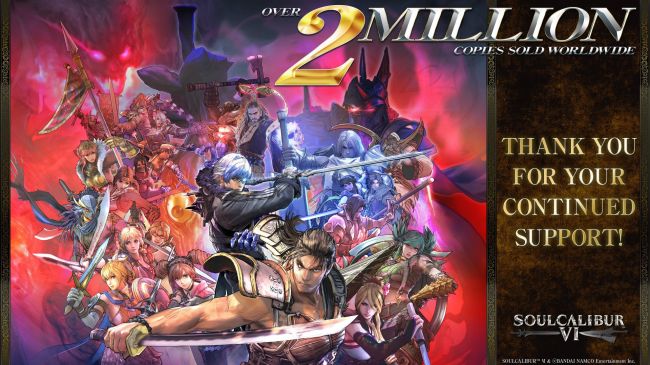

These storylines intersect with Libra of Soul and feel more coherent, but it’s only mildly interesting in the face of Libra of Soul’s grander scope. The other story mode, Soul Chronicle, takes a more traditional approach, consisting of visual-novel-style stills telling the story of individual characters in the early years of Soulcalibur’s timeline between fights. is surprisingly nuanced, too I remember specific enemies that were overeager about reflecting my attacks or relentlessly tried to push me off the edge. I liked that I needed to zero in on different aspects of combat, managing my movements carefully or learning what the best approach with a particular attack button is. Matches might make the stage extra-slippery, certain attacks much stronger, or your opponent's attacks poisonous. Luckily, fights are frequent and varied enough that I was invested in the mode nonetheless.

Despite a few interesting questlines, most of the tales aren’t memorable. The story takes place throughout the early years of the Soulcalibur series, as your character goes in search of both the Soul Edge and Soulcalibur while fending off mysterious “astral fissures” popping up around the world. You also do quite a bit of reading, however, which is frustrating since the narrative isn’t exactly compelling. It’s an RPG-lite experience in which you create a character based on another character’s fighting style then plot your course through a large map in search of opponents, quests, and weapons as you level up. Libra of Soul is ambitious, but held back by an over-reliance on text and scattered pacing.

The single-player options include the standard arcade and training modes, but also two story modes. This gives you a great starting point to work with as you find new options and introduce your own twists on your favorite character. Not only does the tutorial get you up to speed on every universal mechanic, but the “combat lessons” tab in the pause menu gives you a brief rundown of each character’s gameplan, as well as a few suggestions about which moves to use at different ranges. With all these new options and the unique mechanics of individual characters, it helps that the onramp is smoother than ever. The addition of the Soul Charge also gives you a way out of oppressive situations by knocking your opponent away and powering up your attacks for a short time. Guard impacts now deflect any kind of attack and don’t use up your soul gauge, but still require clutch timing to pull off. You can charge it to parry attacks, or land it immediately if you catch someone off-guard.Ī combination of new and refined defensive mechanics also make it easier to break out of an opponent’s pressure. Executing the move, which locks both players into a rock-paper-scissors showdown if landed, has some strategy behind it. I was worried the new Reversal Edge attack would dumb down combat, but it actually adds an interesting new layer. That said, a number of smart refinements make Soulcalibur VI’s combat more nuanced than its predecessors'. Although combos are more prominent than they have been in the past, most are simple you benefit more from learning a wide array of attack strings to trick your opponent than optimizing how much damage you get when any of them land, which leads to diverse fights based on a great mix of reaction and memorization. Within that nostalgic pitch, however, is a combat system that deftly builds on its predecessors, with several smart improvements that give players more ways to dig into a fighter that’s equal parts intricate and flashy.įighting is still rooted in simple 3D movements and vertical, horizontal, and kick attacks, which all feel intuitive. It eschews the slew of new characters in Soulcalibur V for a retelling of the events of the original Soulcalibur, and brings back most of the iconic characters in classic attire. On its surface, Soulcalibur VI is a reboot for the weapon-focused fighting series.


 0 kommentar(er)
0 kommentar(er)
